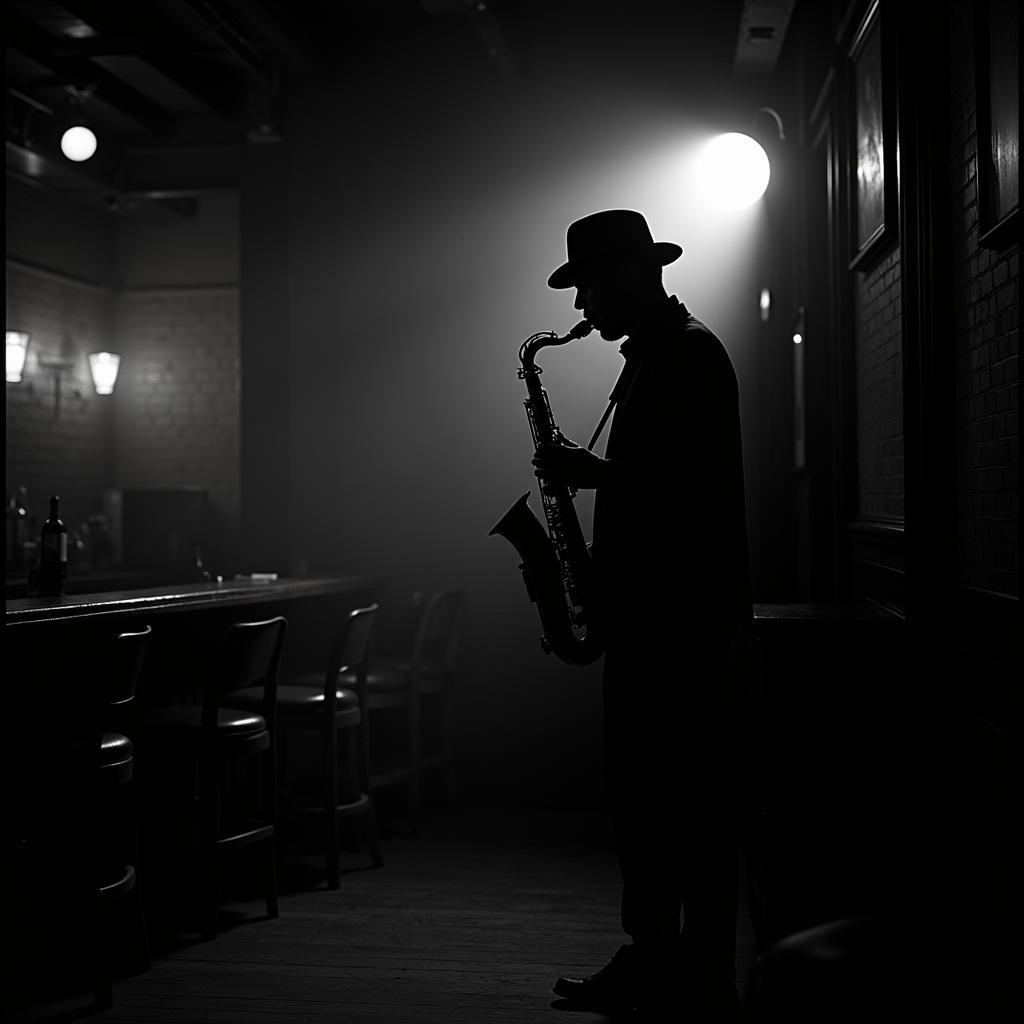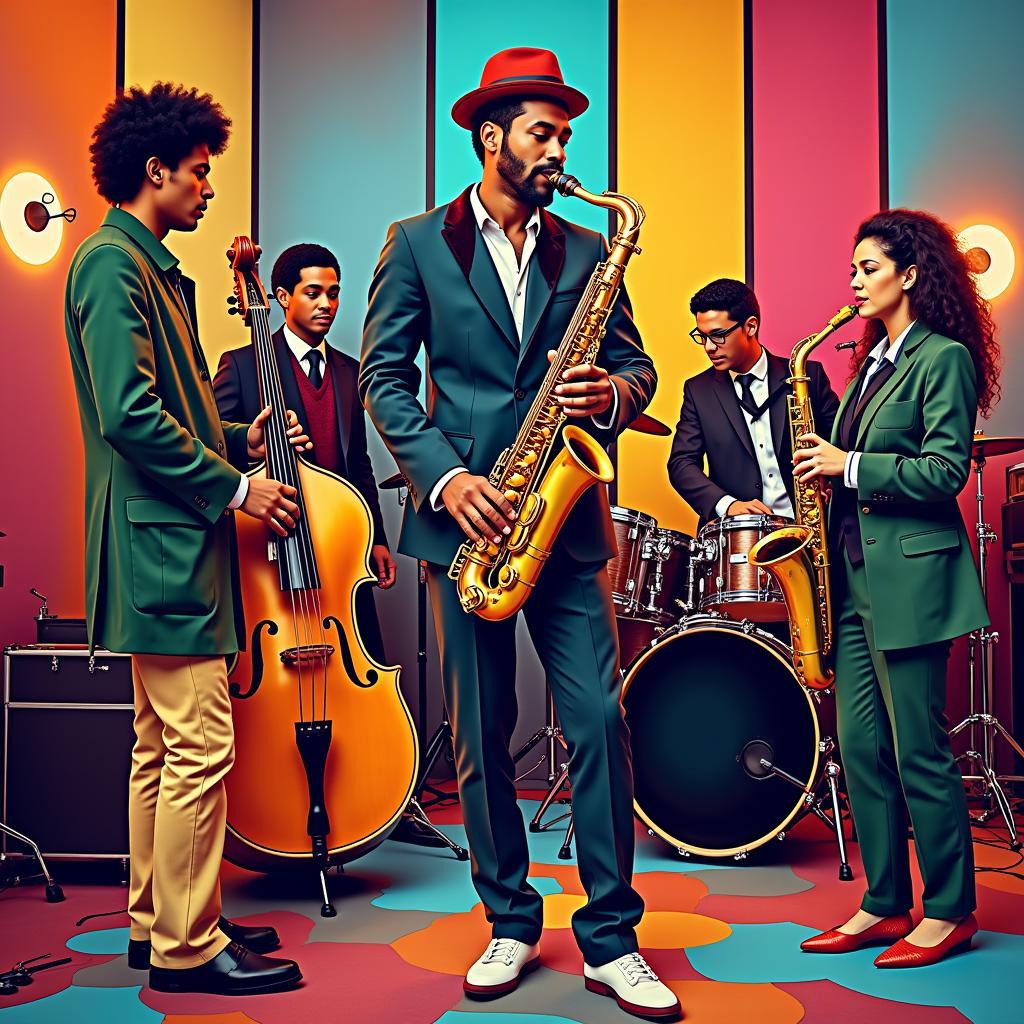The saxophone, with its sultry and evocative sound, has played a prominent role in shaping the soundscape of American cinema. From the smoky jazz clubs of the 1920s to the soulful soundtracks of modern films, the saxophone has added depth, emotion, and a touch of magic to countless movies. This article explores the rich history of the saxophone in American films, examining its diverse applications and enduring impact.
The Golden Age of Jazz and the Saxophone’s Rise to Fame
The 1920s and 1930s witnessed the birth of jazz and the saxophone’s ascension to prominence in American popular culture. This era, often referred to as the “Golden Age of Jazz,” saw the instrument become synonymous with the vibrant nightlife and cultural revolution of the time. Films like “The Jazz Singer” (1927) and “King of Jazz” (1930) showcased the saxophone’s versatility, capturing its energetic and improvisational spirit. These early films solidified the saxophone’s place in American cinema and established it as a symbol of sophistication and cool.
The Saxophone’s Evolution in Film Scores
As film evolved, so too did the role of the saxophone in its musical landscape. From the romantic ballads of the 1940s to the edgy scores of film noir, the saxophone adapted to a variety of genres and moods. Composers began to utilize the instrument’s expressive range to create evocative soundscapes that enhanced the emotional impact of films. The saxophone became a key element in conveying everything from heartbreak and longing to suspense and mystery.
The Saxophone in Noir and Crime Dramas
The saxophone’s melancholic tones found a natural home in the dark and atmospheric world of film noir. Films like “The Big Sleep” (1946) and “Touch of Evil” (1958) utilized the saxophone to create a sense of unease and tension, mirroring the moral ambiguities and psychological complexities of the characters and storylines. The instrument’s ability to evoke a sense of loneliness and urban alienation made it a perfect fit for the noir genre.
 Saxophone in Noir Films
Saxophone in Noir Films
“The saxophone’s ability to convey a range of emotions, from joy to despair, is what makes it such a powerful tool for filmmakers,” says renowned film composer, Amelia Hayes. “It can be both seductive and unsettling, adding a layer of complexity to the narrative.”
The Saxophone in Contemporary Cinema
The saxophone continues to thrive in contemporary cinema, appearing in a diverse range of films, from animated features to independent dramas. Its versatility allows it to be seamlessly integrated into various musical styles, adding depth and texture to modern soundtracks. The saxophone’s enduring appeal lies in its ability to connect with audiences on an emotional level, transcending cultural and generational boundaries.
The Resurgence of Jazz-Influenced Soundtracks
Recent years have seen a resurgence of jazz-influenced soundtracks in film, bringing the saxophone back into the spotlight. Films like “La La Land” (2016) and “Soul” (2020) celebrate the rich legacy of jazz and showcase the saxophone’s enduring power to captivate and inspire.
 Saxophone in Contemporary Cinema
Saxophone in Contemporary Cinema
“The saxophone has a timeless quality that resonates with audiences of all ages,” notes music historian, Dr. David Miller. “Its ability to evoke a sense of nostalgia while also feeling fresh and contemporary is what makes it such a valuable asset in filmmaking.”
Conclusion
The saxophone’s journey through American cinema is a testament to its enduring appeal and versatility. From the early days of jazz to the modern soundscapes of contemporary film, the saxophone has played a pivotal role in shaping the emotional landscape of countless movies. Its ability to evoke a wide range of emotions, from joy and exuberance to melancholy and introspection, ensures its continued presence in the world of film for generations to come.
FAQ:
- What is the significance of the saxophone in jazz music?
- How did the saxophone become associated with film noir?
- What are some notable examples of saxophone use in film scores?
- How has the saxophone adapted to different genres in film?
- Why does the saxophone remain popular in contemporary cinema?
- What are some of the most iconic saxophone solos in film?
- How does the saxophone contribute to the overall emotional impact of a film?
For any assistance, please contact us at Phone Number: 02933444567, Email: [email protected] or visit our address: RF55+W7R, Lê Hồng Phong, Vị Tân, Vị Thanh, Hậu Giang, Việt Nam. We have a 24/7 customer support team.


